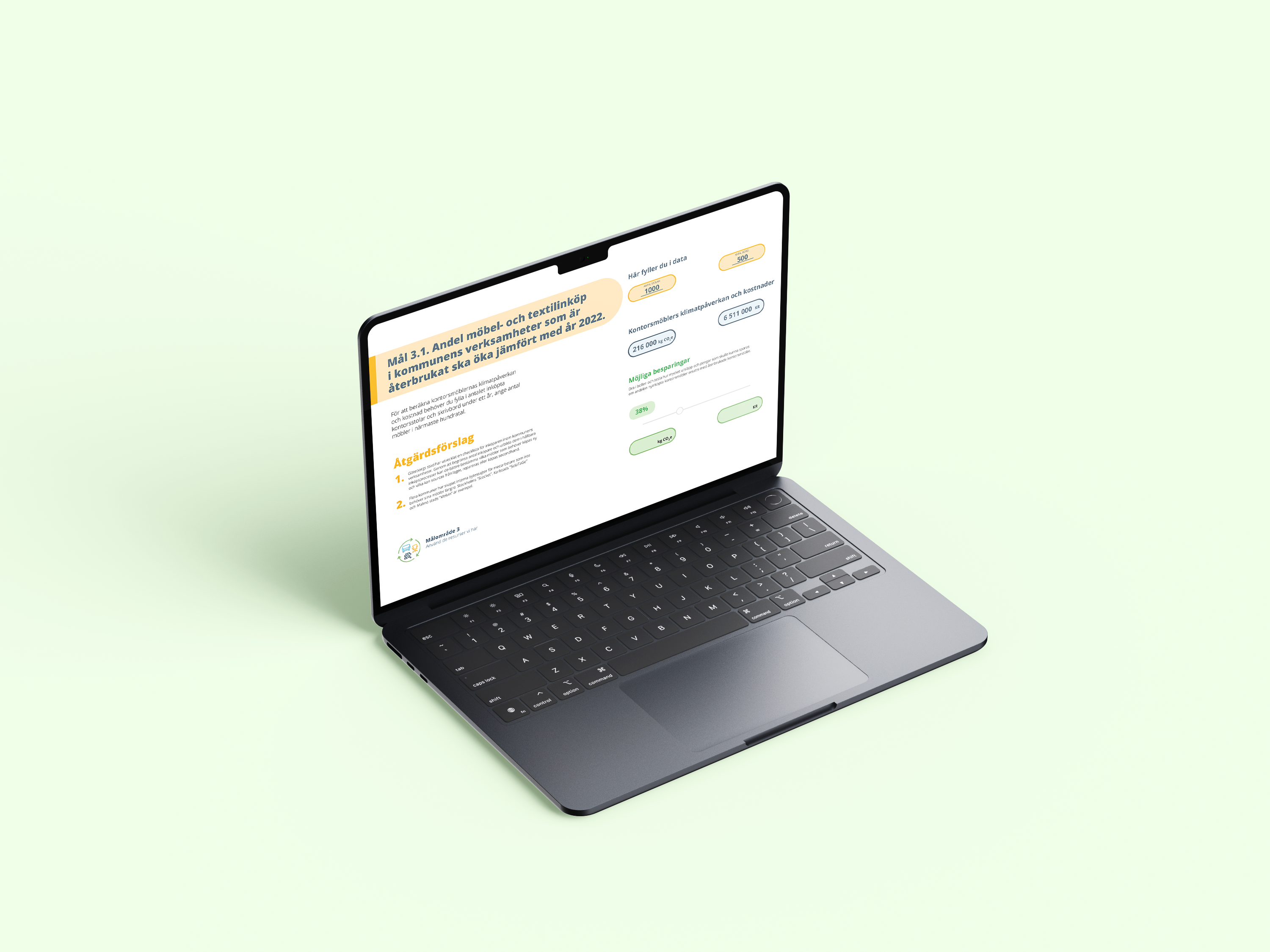Methodology
In close collaboration with the Borås region, Point designed a digital calculation and communication tool that and visualizes the environmental and economic effects connected to the municipalities’ work with the waste management plan.
The calculation models were carefully crafted and based on available data produced by Swedish authorities and published research. Great attention was placed on making the mathematical models correct from a fact and research standpoint.
The tool was adapted so that each municipality can fill in its own data and get results that are specific to their geographical area. Based on the data fed into the tool, the reduction in annual climate impact as well as the cost or cost reduction of the selected target numbers are calculated.
The goal of the tool was that all municipalities the region should receive support and help in prioritizing and motivating waste prevention measures. Therefore, the tool was designed around easy of use and the focus areas covered were based on local conditions. It was also important that the look and feel of the tool blended with the Borås Region’s visual identity.
Deliverables
Point delivered a taylor-made digital and interactive tool that calculates and visualizes the environmental and economic effects of the municipalities’ work with the waste management plan. The tool is designed for the municipalities themselves to be able to analyze and test how large emission and cost savings can be achieved based on a chosen course of action.
In addition to the calculation tool, Point delivered two reports that explain the process of and choices behind the facts, assumptions and limitations connected to the tool.
The reports also presented good examples and proposed actions based on the nine selected target areas in the waste plan.
